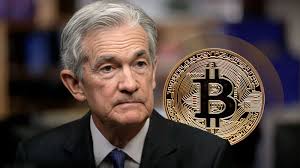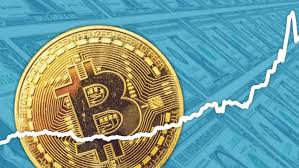Hook: Is the Fed About to Save Crypto?
A storm is brewing in the financial world, and Bitcoin could be right in the middle of it. A weaker-than-expected U.S. jobs report is making analysts think the Federal Reserve (the Fed) might finally shift gears and lower interest rates. If they do, it could pump fresh life into risky assets like Bitcoin, but there are still roadblocks ahead. Let’s break it all down.
What’s Happening?
The U.S. economy added fewer jobs in February than expected—only 151,000 instead of the predicted 170,000. That might not seem like a big deal, but in the financial world, it signals that the economy could be slowing down. A weak job market means people have less money to spend, and when that happens, the government usually steps in to help.
The Fed’s main tool to boost the economy? Interest rate cuts. Lowering interest rates makes borrowing cheaper, which can increase spending, investments, and liquidity in markets—including crypto. But here’s the catch: the Fed is still worried about inflation (rising prices), which is why they’ve been cautious about making moves.
Why Does This Matter for Bitcoin and Crypto?
- Rate Cuts = More Liquidity = Bitcoin Boost
- If the Fed cuts rates, money becomes cheaper to borrow, and investors look for high-return assets. Bitcoin and stocks benefit because people take more risks when money is easier to get.
- Economic Slowdown = More Government Action
- A weak job market and slowing economic growth could force the Fed to step in and support the economy sooner than expected.
- Bitcoin thrives in uncertain times—many see it as a hedge against economic problems.
- Inflation Risks and Supply Chain Disruptions
- Even if the economy slows, inflation is still an issue. Tariffs, supply chain issues, and global instability could keep prices high. If inflation stays strong, the Fed might hesitate to cut rates, keeping crypto investors on edge.
- Market Reactions Show Uncertainty
- Some investors are bearish (expecting prices to fall) and are positioning themselves accordingly.
- Derivatives traders (those who trade contracts predicting future prices) are betting that Bitcoin could struggle in the short term unless a new bullish narrative appears.
Key Terms to Remember
- Dovish Fed – When the Federal Reserve is more likely to lower rates and stimulate the economy.
- Liquidity – The amount of money flowing in markets. More liquidity usually means more investment in assets like Bitcoin.
- Inflation – The rise in prices of goods and services. If inflation is too high, the Fed may keep rates higher for longer.
- Risk Assets – Investments like stocks and cryptocurrencies that perform well when people are willing to take risks.
- Derivatives Market – A market where traders bet on future price movements using contracts.
What to Watch Next?
- June Fed Meeting – This is when most traders believe the Fed will cut rates. If they do, it could be a turning point for crypto.
- Key Economic Reports This Week – Watch for the Consumer Price Index (CPI) on Wednesday and the Producer Price Index (PPI) on Thursday—these will show if inflation is slowing down or still a problem.
- Bitcoin’s $80,000 Level – Analysts say this is a critical support level. If Bitcoin falls below it, it could signal more downside before recovery.
Why This Matters to You?
If you’re involved in crypto, this is a big moment. The Federal Reserve’s actions directly impact Bitcoin’s price, and a dovish shift (rate cuts) could be a major catalyst for another bull run. However, inflation and economic instability could still throw curveballs, making this a time to stay alert and informed.
The next few months could define the next major trend for crypto—so buckle up and watch the markets closely!



